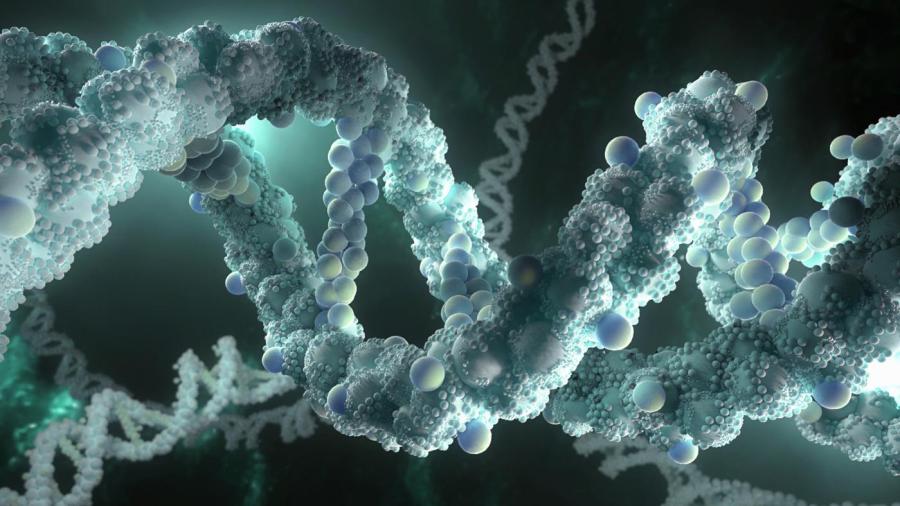What Does DNA Stand For?

DNA stands for deoxyribonucleic acid, which is the molecule that carries genetic information in humans and all other living organisms.
Deoxyribonucleic acid is composed of four chemical bases: adenine, guanine, cytosine and thymine. The sequence of these bases within DNA encodes genetic information.
Human genomes comprise approximately three billion chemical bases. More than 99 percent of human DNA is identical from individual to individual. The majority of DNA is found in the cell nucleus while the rest is located in the mitochondria.
The Discovery of DNA
Although DNA had been observed in 1869 by the German biochemist Frederich Miescher, its importance wasn’t recognized. The double helix structure of DNA was discovered almost a century later by Francis Crick, James Watson, Rosalind Franklin and Maurice Wilkins and in 1953.
The Structure of DNA
Molecules called nucleotides make DNA. Every nucleotide comprises a nitrogen base, sugar group and phosphate group. The four nitrogen bases mentioned earlier form genes, instructing the cells on how to produce proteins. A human genome has approximately 20,000 genes.
The structure of DNA consists of two connected strands of chemical bases, which form a spiral known as a double helix. If imagining the double helix as a ladder, the two sides are formed by the phosphate and sugar groups while the rungs are formed by the bases. These bases are actually in paired units. Guanine and cytosine form one base pair; adenine and thymine form another base pair.
DNA has the ability to replicate so that one DNA strand in the double helix acts as a template from which the base sequences are duplicated. As DNA molecules are so long, they are coiled incredibly tightly to form chromosomes so that they fit into cells. One chromosome has one DNA molecule. Humans have 23 chromosome pairs and the DNA within them carries hereditary information, almost like a blueprint for the next generation.
Animals and plants store DNA in the nucleus of the cell whereas it’s stored in the cytoplasm of the cell for prokaryotes like bacteria. Many viruses do not contain any DNA and instead rely on RNA. RNA, ribonucleic acid, is very similar to DNA and, like DNA, is essential to all forms of life but is single rather than double-stranded and makes use of uracil as a chemical base in place of thymine.
In a DNA sequence, the bases’ order can be determined using technology called DNA sequencing. As well as this, the base order can be found in chromosomes, genes and a genome.
Uses for DNA Testing
As DNA contains hereditary information, it can shed light on whether diseases that have affected other family members pose any risk to an individual. Genetic disorders can be diagnosed and DNA tests can also reveal whether an individual is a genetic mutation carrier. If this is the case, the defective gene could be inherited by that person’s children.
As well as medical history, DNA tests confirm familial links. One common use of DNA fingerprinting is in paternity cases. It can also help identify siblings if children were separated at an early age and have been reunited.
Within forensic science, DNA is used to solve crimes when blood, skin or other bodily samples are collected at crime scenes. When bodies cannot be identified due to bad decomposition, DNA is used for this purpose.





